Agriculture and It’s Effects
The good, the bad, and the ugly
With our constantly growing world there is also an ever growing demand for food and resources. Ultimately the increase of human population consequentially means there is a growth in agriculture, and with land needed for agriculture there is a continuous felling of more forests to make land accessible. This is also the case in the Nilgiris, especially in regards to the tea plantations. Tea plants were not a naturally growing plant in these Blue Hills but rather began to be cultivated in the 19th century during time of colonial rule and took off as a cash crop in this area by the late 19th century. For further information please refer to this site (https://www.teabox.com/blog/history-of-the-nilgiri-tea) that gives a detailed history of the tea in the Nilgiris, starting with Coonoor.
Tea is one of the most abundantly and economically savvy crops in the Nilgiris, however it came at a heavy price that is being noticed more and more today. The natural Shola forests and grasslands have been reduced for more than a century. This has severely reduced the habitats for the natural wildlife, including for the honeybees. Not only are these bees losing the substrates (i.e. trees) necessary for their homes there are also losing much of the natural flora, which they used for nectar collection. With the reduction of the Shola forest and the conversion of grassland there has been more soil erosion, causing a loss of nutrients. In addition, tea plantations require a great amount of pesticides, which has numerous adverse effects when it spreads to surrounding areas as a run-off.
There is no current research on the severity of impact that pesticides have on the Nilgiri environment and wildlife, such as in regards to the honeybees. However, extensive research has been done in other parts of the world and this global research can be a testament for the potential consequences taking place in the Nilgiris. One important piece of literature comes from the study paper called “Are Neonicotinoids Killing Bees?” that was done out of speculation as to why the honeybees of Europe and the US are dying off.

Neonicotinoids are systematic chemicals that can be found in many pesticides. These chemicals can be absorbed by the plants on which the pesticide is put and the chemicals will travel through the vascular system, which in turn makes this plant toxic to insects. Even more concerning is that the chemicals can end up in the pollen and nectar of the plant; thereby making pollinators, such as honeybees, susceptible to the toxins. This can reach lethal levels. These toxins can persist within the soil and plants for a long period of time (months and even years). In some cases, woody plants have retained the neonicotinoid chemicals after 6 years of the pesticide being applied. When these chemicals are applied on crops they can also contaminate surrounding weeds as well as wildflowers.
Plants slowly metabolize the chemical compounds after they absorb them and some of what is broken down is equally toxic towards the honeybees or even more so than the original compound. There are a variety of adverse effects on the honeybees that are exposed to these toxins. For example, they experience difficulties with flying/navigation, reduced sensitivity to taste, and slower task learning capabilities. There is also a possibility that neonicotinoids may cause honeybees to be more susceptible to parasites and pathogens. Some common insecticides that have neonicotiniod chemicals in them include, but are not limited to, Imidacloprid and Dinotefuran.
What is beneficial?
Not all agriculture is adverse towards honeybees, either directly or indirectly. In fact, there are some crops that are beneficial towards honeybees and their pollinating endeavors. For instance, millets are wind pollinated and do not require insects for pollination. However, the millet-vegetable complex characteristic found within indigenous farms offers a diversity of foraging resources for pollinators, such as the flower of the millet plant that can be a pollen supply. Other plants that also provide foraging resources include: runner and creepers of beans and gourds, okra, brinjal, etc., several tubers, as well as other herbs. Recent studies done on the vegetable farms Tadsalatti in Hasanur revealed that the diversity of hedge plants play a significant role in attracting insects and birds to pollinate and act as pest control on the crops.

Two other main cash crops in the Nilgiris are coffee and cardamom, and both contribute to the conservation of bees by the sheer fact they need these insects for pollination to thrive themselves. Studies have shown that when honeybees visit these plants then the crops have higher yields of fruiting. However, the benefit does not just go towards the coffee and cardamon but honeybees are also benefited in this relationship. Human and agricultural growth are inevitable, yet plantations like coffee and cardamon can provide habitats for these bees. These crop plots require shade trees, which are typically the trees from the original forest. Thus these shade trees provide nesting habitats to the honeybees thereby contributing to conserving these vital species even in the midst of their forest homes being destroyed.
Honeybees are considered one of the most important pollinators on the planet and along with the other pollinators the contribute to the reproduction of ~85% of flowering plants as well as 35% of global crop production. Unfortunately, honeybee populations have been severely declining due to factors such as diseases and intense habitat loss. It is not only agriculture that reaps the benefits of pollinators, so too do wildlife who feed on the seeds and fruits that require pollination. This make pollinators, especially honeybees, keystone species because they are crucial to the survival of so many other species and systems. Therefore, the conservation of pollinating insects, of honeybees, is detrimental to the preservation of biodiversity as well as agriculture.
Water Sources, Forests, and Grasslands
Water Quality and Sources of the Nilgiris
The Blue Mountains are significant for their water sources found throughout the hills. They are not only a crucial drinking source for the local people and wildlife but also serve as major sources of river basins for Tamil Nadu, Karnataka, and Kerala. More specifically, the Nilgiris district has four basins, being – The Moyar Basin, which supplies 24 with water and this water is a major supplies to irrigation and drinking water for Tamil Nadu. The Bhavani Basin, which supplies 26 rivers with water and flows all the way to the plains of Tamil Nadu. The Kabani Basin has 5 major rivers that eventually drain into Karnataka and finally the Chaliyar Basin has 8 major rivers that flow into Kerala. The first two basins will eventually feed into the Cauvery River Basin.
Needless, there are many people and ecosystems that depend on these waters for survival, agricultural economies and plantations, wildlife sustainability, and more. For example, there are vast tea estates in the Nilgiris that rely on an abundance of water while at the same time there are a multitude of indigenous communities that roam these hills and need the waters to support their livelihoods.
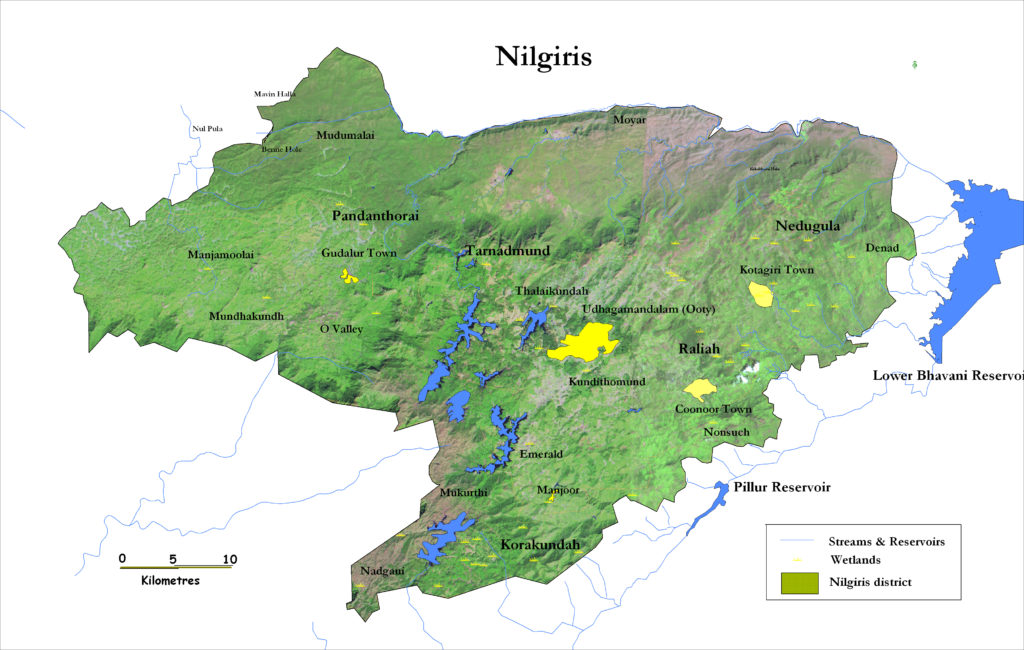
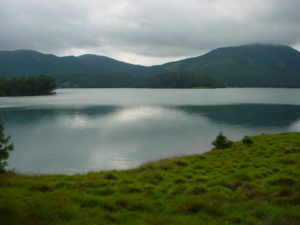
One specific kind of water source in the Nilgiris that is especially significant are the wetlands. These, along with streams, will continue to provide a steady supply of water to rivers, even after the monsoon season has passed and there is no more rains supplying water. This is due to the phenomenon of groundwater, in which a visible source of water known as an aquifer will emerge to the surface and supply water, and this becomes wetlands or streams. Thus, wetlands ensure that water is available year round as well as reduce the changes of potential flooding. They also play a multitude of other roles, such as supporting biodiversity and cleaning other water sources of pollutants.
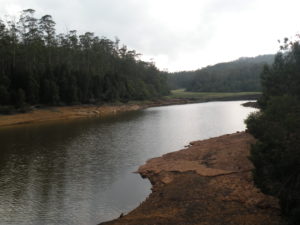
Yet, even with the fact that these water sources are critical, they are being tampered with severely, which will lead to a lot of concerning consequences. For example, with the increase of tea plantations and other commercial farms this has also led to an increased use of pesticides and fertilizers, which ultimately flows into these water sources. This is causing an abundance of harm, such as increasing water borne and skin disease for indigenous communities who rely on these waters as a direct drinking source. Land use change also increase soil erosion and the dramatic reduction in rainfall has even been connected to the destruction of forests and marshes at a large scale. When wetlands shrink or dry up, then invasives such as Lantana start to invade the land even more.
It is imperative to conserve the multitude of water sources in the Nilgiris, from wetlands to streams to aquifers and more. Without these water sources and their variety of forms many will suffer; not only the local people and environment but so too will surrounding communities and states. There used to be a variety of governance and resource sharing of water among the various Indigenous communities yet this has since changed with the implementation of government schemes. With a rapidly changing world, both socially and environmentally, and even to the small area of the Nilgiris district, we need to better understand and protect these water sources. The effort may be time intensive and great, yet the need for and reliance upon water is far greater. Please refer to the Nilgiri Water Portal for more information.
Forest and Grasslands
Forests
There are numerous kinds of ecosystems in Nilgiri Biosphere Reserve. Forested environments are such a kind of ecosystem, like the Shola Forest found in the Nilgiris district. There are several qualities to a forest, such as but not limited to – supporting and supplying water to a local area (a common feature of the Shola), having available NTFPs (non-timber forest products) to those who rely on the forests for their livelihoods, being a food and shelter source for wildlife, supporting diversity, sustaining oxygen supply, etc.
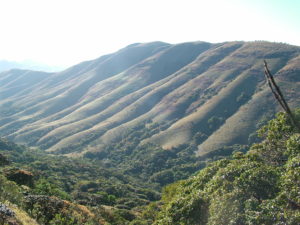
In the Nilgiri, forests as well as other wildlife habitats are an ideal source for one of the most evolutionary intricate and intimate partnerships in nature – pollination. With the growing human population in conjunction with the growing demand for food, the natural landscapes are being converted for the purpose of agricultural production, especially for mono crops like tea. By converting these forests into plantations the soil has been eroding more, the diversity as well as number of plants species has reduced, and this in turn has decreased the habitats and resources necessary for honeybees. Therefore, pollination has consequentially been impacted.
As the forests continue to be degraded and fragmented this makes attracting and supporting pollinators, such as honeybee, more and more challenging. This therefore results in a decline in seed and fruit production, and not just for the forest but also for agricultural crops as well. Experiments as well as observations around the world have shown that when natural bee habitats have undergone land use change (otherwise, meaning their forested homes destroyed or reduced) then several crops incur a pollinator deficit.
In other words, lack of native forests is also a serious problem for crops. These very plantations that were cultivated and for which several surrounding forests were felled, also rely heavily upon forests for its natural inhabitant, the honeybee, which pollinates crops and enables growth. Agriculture is necessary for the survival of humans, however it must also be done responsibly with the consideration of wildlife habitats. Both impact one another, as all things are interconnected in this world, and if done well can reap benefits for both the natural and societal aspects of the world.
For more information refer to this website:
Grasslands
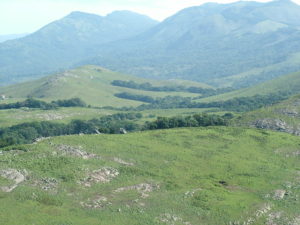
Most often in the Nilgiris when there are Shola forests there will also be grasslands, these vast open spaces that are covered in grassy vegetation with a few tree patches dotting the landscape. In general, the Western Ghats are covered with extensive grasslands that can be found adjacent to evergreen forest. It is debatable as to whether the grasslands are a climatic community or are continuously progressing towards the aborescent (tree-like) stage. Nevertheless, grasslands are critical ecosystems that support biodiversity and supply a lot of nutrient resources.
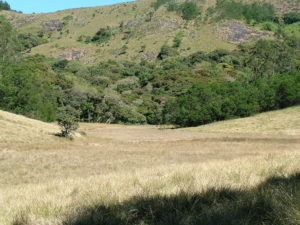
They are referred to by a variety of names, from savannas to prairies, depending on where they are found in the world. Their value ranges from providing cereal grasses (a staple food) for humans, fodder for other species, and even having medicinal plants like lemon grass. In fact, the history of grasslands has been heavily intermixed with that of human civilization, not only as a food source but has also enabled the survival and prosperity of human life. More specifically, cereal cultivation developed alongside the discovery of using fire for cooking as well as domestication of animals. Hence, grasslands contributed to human beings settling down into agricultural communities and thus played a major role in the development of human culture.
It is estimated that prior to human beings creating civilizations, the world’s total land cover was approximately 40% and this has now reduced to about 24%, mostly due to converting grasslands in arable land for crops or range-lands for animal husbandry. In India, it is estimated that there is 13,813 square km of grassy vegetation coverage. There is a move to stop felling forests for the purposes of plantations; however, given the ever-growing demand for food among the human population, land conversion is being done more with natural grasslands.
Biodiversity
Western Ghats
The Western Ghats is a biodiversity hotspot in India and considered on of the eight ‘hottest hot spots’ in the world. It comprises six different states (Goa, Gujarat, Maharashtra, Kerala, Karnataka, and Tamil Nadu), within which includes 52 districts and stretches over 1500km with a break only for 30 km at the Palghat Gap.
What makes this natural stretch considered a biodiversity hotspot (of which there are 25 in the world) is the fact it has a unique and rich assemblage of flora and fauna. For instance, there are hundreds of endemic species in the Western Ghats, meaning these species are found nowhere else in the world, not even the other parts of India. The Western Ghats also plays a crucial role in the both the biophysical and ecological processes within the entirety of the peninsular part of India. When the monsoons start rolling in the Western Ghats act as a barrier and intercept the rain-laden storms, thereby mediating the tropical climate.
With regards to plants, the Western Ghats have been described by Hooker in 1904 as the ‘Malabar’ floristic region. This is partly due to the fact that the Western Ghats has a wide variety of ecosystems: dry deciduous forest, shola forest, evergreen forest, scrub jungles, peat bogs, savannas, and Myristica swamps. The swamp, specifically, is a special kind of fresh water swamp in which an endemic palm is found. There are over 4500 species of plants, of which 1,700 of this species are endemic and one third of the total plants in the Western Ghats are considered rare or threatened.
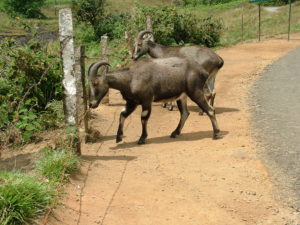
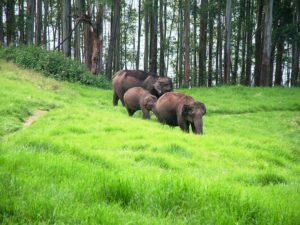
The fauna diversity is also incredibly impressive within the Western Ghats, having thousands of different animal species. There are more than 117 species of amphibians, of which 78% are endemic; and there are about 590 species of birds, 16 of which are endemic. Other percentages of endemism among vertebrates include: mammals (12%), reptiles (62%), and fish (53%). Some examples of the mammals that are endemic are: the Lion-tailed macaque, Nilgiri Langur, Rusty Spotted Cat, and the Slender Loris. At least 325 of those animals and flora are threatened species, many of which are endemic, especially in regards to the amphibians and reptiles. The Western Ghats is home to some of the largest population of globally threatened species such as the Asian Elephant, Gaur, and Tiger. Given that a large number of vulnerable and valuable species depend on the Western Ghats, it is imperative to protect and sustain it.
The Western Ghats is also an important water source that accounts for most of the rivers (2 major examples being the Godavari and Cauvery Rivers) supplying water to towns and cities and is a critical source of oxygen for the atmosphere. Beyond indirectly supporting numerous communities outside its bounds with resources, it is home to many different indigenous people groups. Again, another reason why this biodiversity hotspot of India needs to be conserved and protected. Deforestation is a huge detriment to the wildlife and people living within the Western Ghats but it is also a cause for concern for those living in urban settings.
For further information refer to the UNESCO website
Nilgiri Biosphere Reserve
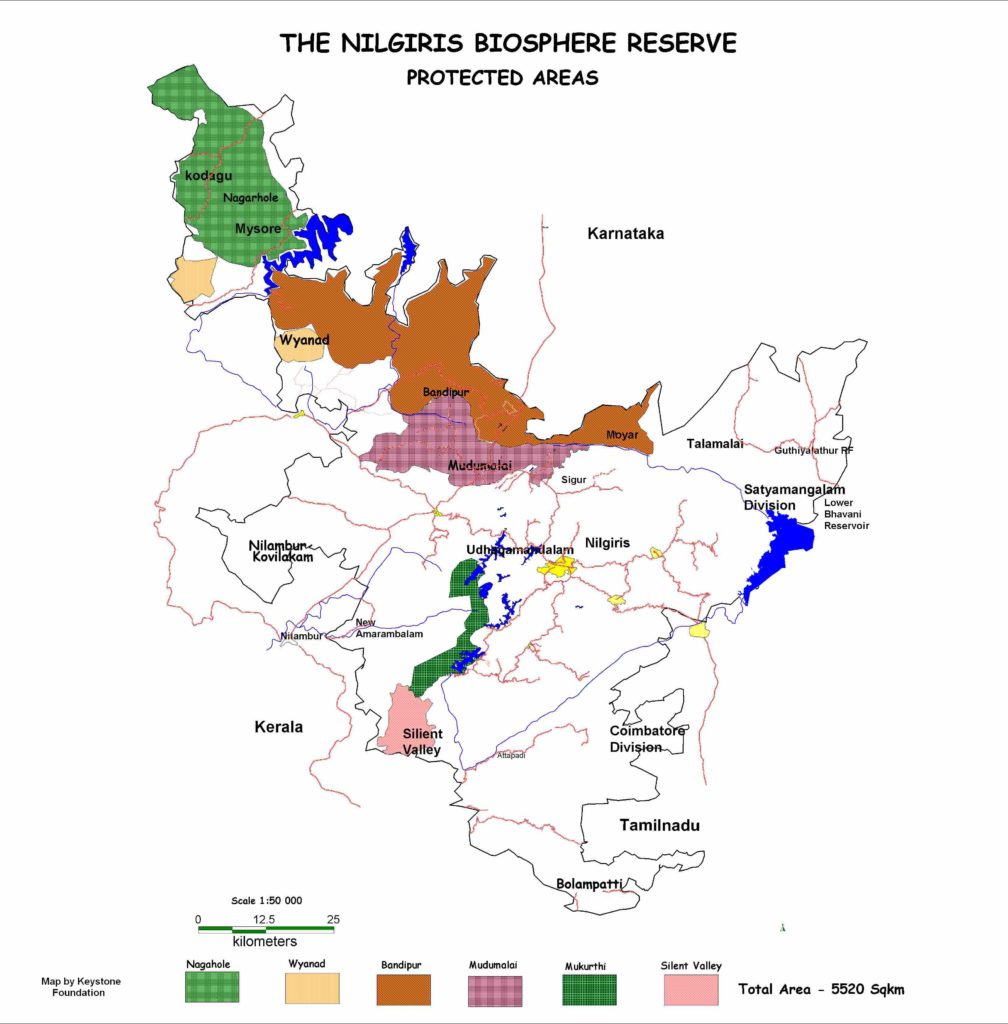
The Nilgiri Biosphere Reserve is found within the Western Ghats and comprises 2 out of 10 of the biogeographical provinces within India. It was established in 1986 as the first biosphere of India. The objectives for why the Nilgiri Biosphere Reserve was established was to: “to conserve insitu genetic diversity of species, restore degraded ecosystems to their natural conditions, provide baseline data for ecological and environmental research and education, [and] to function as an alternate model for sustainable development”. Within the Western Ghats there are 285 endemic species and 55% (156) of those are exclusively found within the Nilgiri Biosphere Reserve. This place is so critical in terms of wildlife and diversity that 70% of the NBR is under the protected area status, specifically as national parks, wildlife sanctuaries, and tiger reserves.
This Reserve takes up a total area of 5,520 square kilometers within three states, being: Tamil Nadu (2,573.6 sq. km), Kerala (1455.4 sq. km.), and Karnataka (1527.4 sq. km.). It receives around 500-7000mm of annual rainfall and has a temperature ranges at about 0°C in the winter and as high as 41°C during the summer. In addition, the NBR is found within the Malabar rain forest and is comprised of these protected areas: The Mudumalai Wildlife Sanctuary, Nagarhole National Park, Wyanaad Wildlife Sanctuary Bandipur National Park, Silent Valley, and Mukurthi National Park.
In terms of vegetation, the NBR still has many areas that have gone untampered and the diversity of ecosystems include evergreen forests and dry scrub as well as swamps. Due to the climatic gradients and altitude the different ecosystems are well supported and nourished. There are several different vegetation types and they are described as follows: Moist evergreen ecosystems are dense and are comprised of multiple stories with gigantic trees. They are found within the narrow valleys of Silent Valley. Then there is the Semi Evergreen ecosystem that is also moist and deciduous, and is most commonly found within the Nilambur and Palghat division. Another vegetation type is called Thorn; it is dense and found mainly within the North easterly area of the Nilgiri district. Additionally, there is the Savannah Woodland, found in Mudumalai and Bandipur, which is comprised of trees dispersed amidst woodland. Finally there are the Shola forests and grasslands that are found in the south and western catchment area of the NBR, such as Mukurthi national park. These forests are considered to be evergreens at high elevation in conjunction with grasslands.
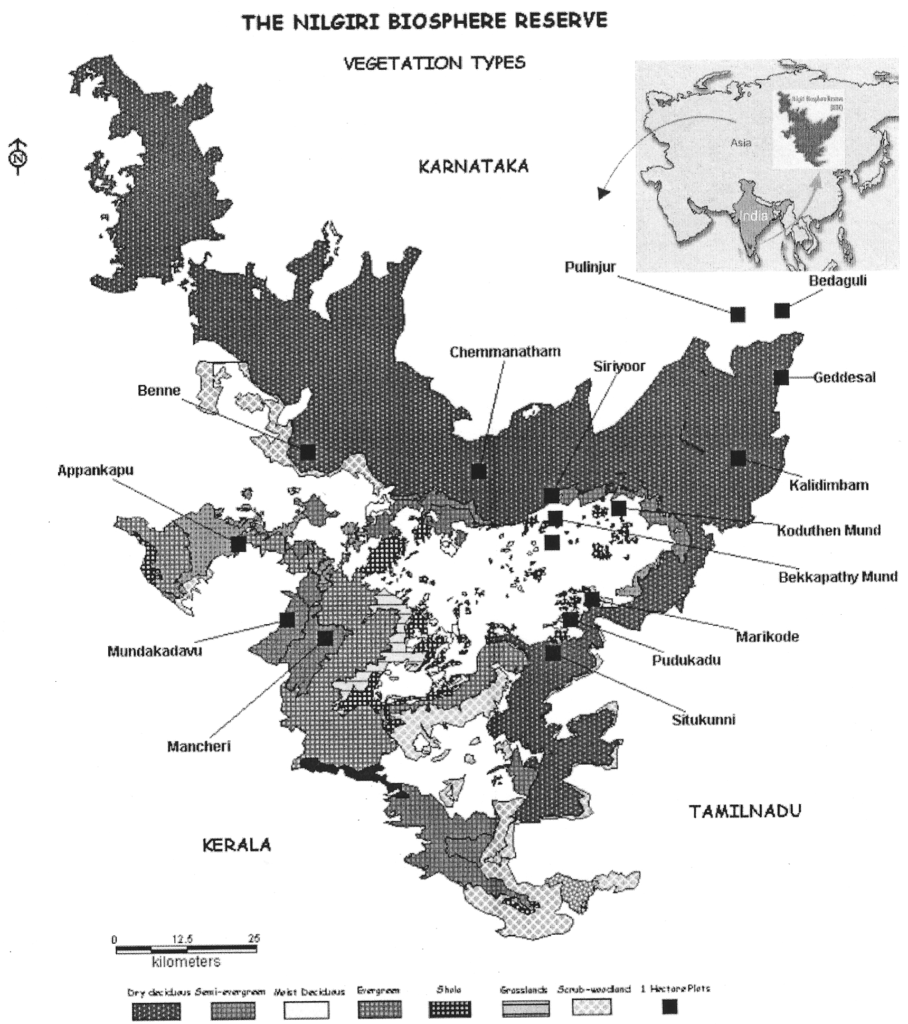
The Nilgiris is very diverse in terms of plants, having 3,300 species of flowering plants, and 132 of which are endemic. For example, the entire genus of Baeolepis is exclusive to the Nilgiris and there are 175 orchid species of which 8 are endemic. More specifically in n terms of plant types there are 3,228 angiosperms (flowering plants), 71 gymnosperms (exposed seed plants), and 134 pteridophytes (ferns). There are also endangered plants within the NBR that include Vanda, Spiranthes, and more. Furthermore, the Shola vegetation of NBR is an invaluable ecosystem that is full of rare plant species. Hence, by the sheer focus of plants, the Nilgiris is a crucial hub of wildlife diversity and endemism.
In addition to plants, the NBR has an incredible fauna diversity, specifically with: 100 species of mammals, 350 birds, 80 of reptiles and amphibians (many of which are endemic to the Western Ghats), 300 species of butterflies and invertebrates, and 39 species of fish. Some of the fresh water fish, like Danio neilgheriensis, and Puntius bovanius, are restricted to the Nilgiri Biosphere Reserve.
Besides the fact that the Nilgiris Biosphere Reserve is a major natural epicenter for diverse ecosystems and wildlife, it also encompasses the Nilgiri district, which is a critical watershed. Within the Nilgiri are the two principal rivers called the Bhavani and the Moyar. It is also estimated that there are more than 30 indigenous groups of the Nilgiri Biosphere Reserve who partake in honey hunting or gather other types of NTFPs (non-timber forest products), hence rely heavily on the forested environments. Yet, with all the significance of the NBR, there is still a great deal of fragmentation taking place. Now the vegetation in the NBR has become severely fragmented due to land use changes.
-
- Specifics on the various regions of the Nilgiris Biosphere Reserve
- Nilgiris
- Lies in the North-western part of the Tamil Nadu
- Has both semi-tropical and deciduous forests
- Gudalur Plateau
- Has severe steep slopes
- Has dry deciduous and tropical semi-evergreen forests
- Tea plantations common
- Mudumalai Forested Hills
- Borders Karnataka state and is declared a wildlife sanctuary, especially for elephants
- Tropical evergreen forests
- Sigur Forested Hills
- This is where the eastern and western Ghats meet
- Deciduous forests in this region
- Is highly exploited due to abundance of NTFPs
- Ootacamund Plateau
- Largely filled with tea plantations
- Area fragile to landslides due to all the plantations
- Mostly comprised of the Badagas, an agriculture community
- Kunda Forested Hills
- This region is completely a basin
- Several tree plantations
- Nilgiris
- Specifics on the various regions of the Nilgiris Biosphere Reserve
- For further information refer to this website:




